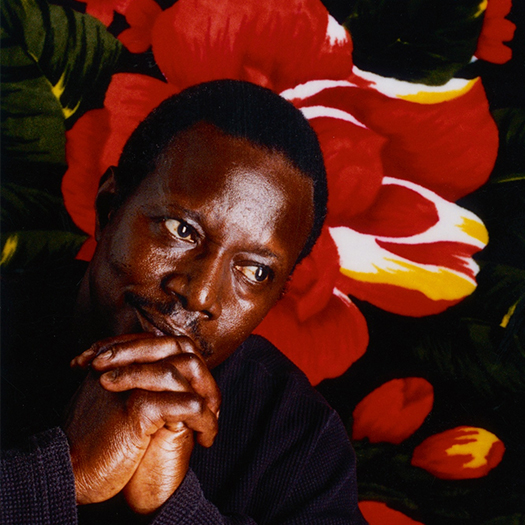Mama Sissoko was born in 1949 in Nioro du Sahel, 450 km north of Bamako. When he was a teenager, his father Bassidi Sissoko and mother Manthia Kouyaté sent him to Bamako to live with his uncle Djeli Baba Sissoko. Djeli Baba Sissoko was a renowned griot and n'goni player in Bamako, and young Mama was naturally introduced to music in this environment. Mama began by accompanying Sissoko on percussion, before taking up the guitar. It was then that he spent his school grant money on an acoustic guitar and managed to convince the mayor of his home town to invest in an electric guitar. He began to play the guitar, self-taught, and developed his own particular style, derived from n'goni playing and Bambara specificities. When he did his military service, he joined the 'Orchestra A de Bamako'. For six years he played with the 'Orchestre National de Bamako' and accompanied it on tours throughout Mali and abroad, including Libya. During the presidency of Modibo Keïta, he played for Kwame Nkrumah, Haïlé Sélassié, and for Che Guevara in Mopti. During the 70s, the Malian music scene was heavily influenced by American music, and Mama affirmed his affinity with blues and soul music, particularly that of Otis Redding.
In 1974, he joined ‘Le Super Biton de Ségou’, as lead singer and guitarist. For 10 years, the group toured Europe and Africa, playing in Angoulême (Musiques Métisses festival) and Paris (Palais des Glaces, Casino de Paris), and in East and West Germany in 1986.
National recognition came in 1970, during the first Cultural Biennial organised by Moussa Traoré. The Biton regional orchestra - not yet known as "Super" - wowed young Malians with its silky brass, subtle guitars, roaring bass, lyrical vocals and resolutely modern sound. On this occasion, Mama Sissoko won the Ebony Guitar prize.
"In 1991, with the change of regime, Alpha Oumar Konaré told the musicians to take charge, and the Biennales came to an end," he recalls. Marked by the death of several historic members, disillusionment and wanderings, the group went on hiatus and the musicians tried their luck solo.
In 1988, with the help of Françoise Huguier, Mama formed his own group, 'le Ton Jon de Ségou'. Three years later, he began a new solo career between his native Mali and Paris. He recorded 'Narena', his first cassette under his own name, in 1991. With the help of Rémy Kolpa Kopoul, he performed on several major stages, opening for BB King at the La Villette Jazz Festival, and had a huge success at La Chapelle des Lombards, in particular when he invited the Brazilian singer Teca Calazans to join him in a duet which was to appear on his first CD 'Jarabi' (1997). The multiple rhythms of Bobo, Bambara, Sarakolé, Peul, Songhaï and Mandingue weave the fabric on which Mama Sissoko builds his compositions largely influenced by blues and jazz. Then came a second album, 'Soleil de Minuit' (1999), dedicated to her sister Nassima, produced like the previous one with her accomplice Michel Zacha and a number of Malian, Guinean and Colombian musicians. In 2000, Mama Sissoko decided to move to Ségou, where he resumed his work with the Super Biton orchestra alongside other members and new musicians, passing on the baton to future generations. In 2004, Santana and Herbie Hancock asked him to play with them at the Montreux Festival. In 2023, Mama Sissoko was awarded the Mérite national.

